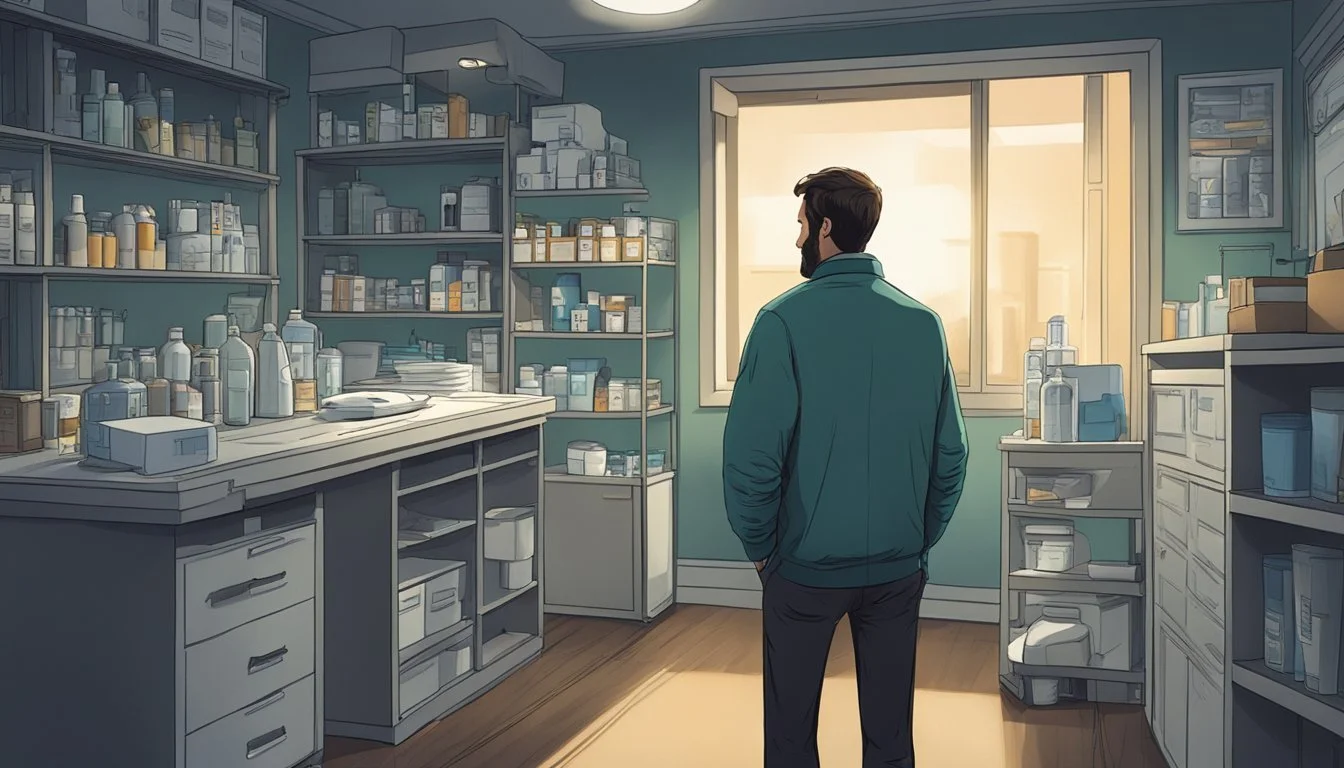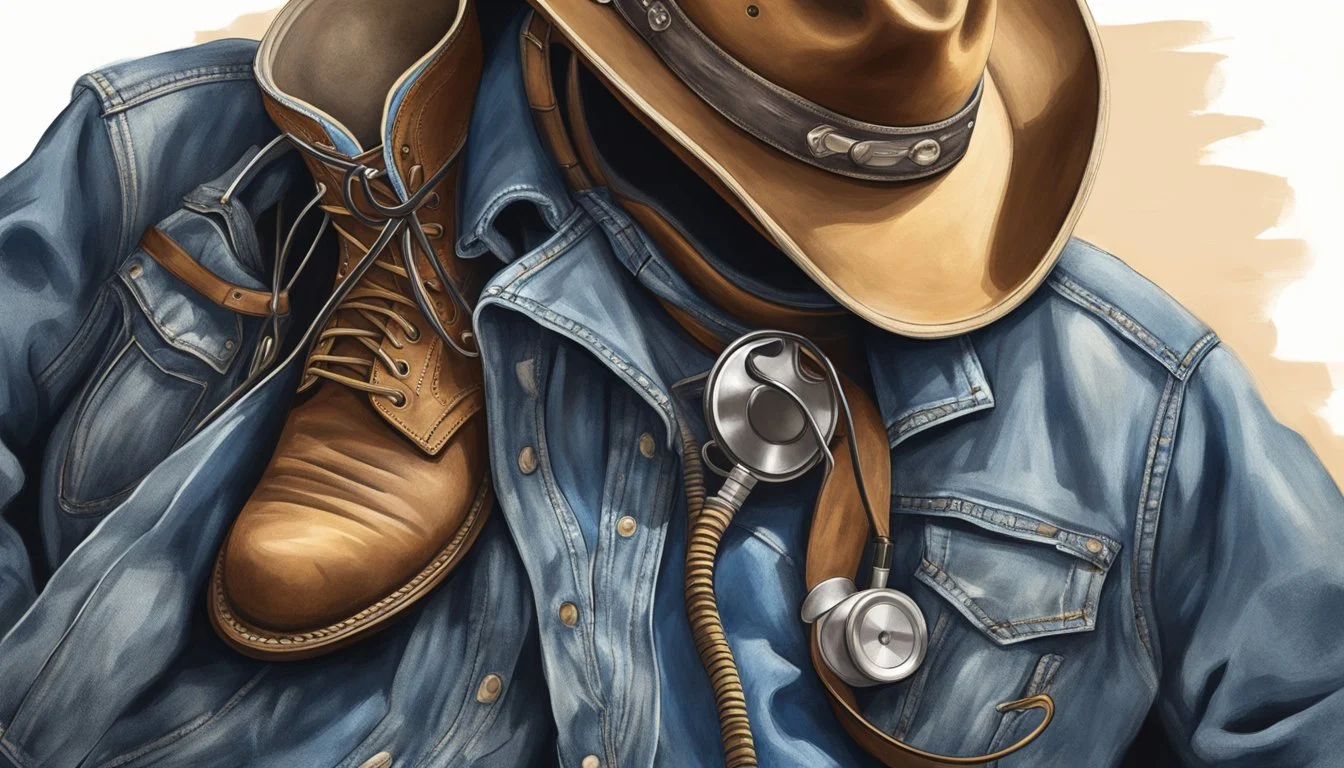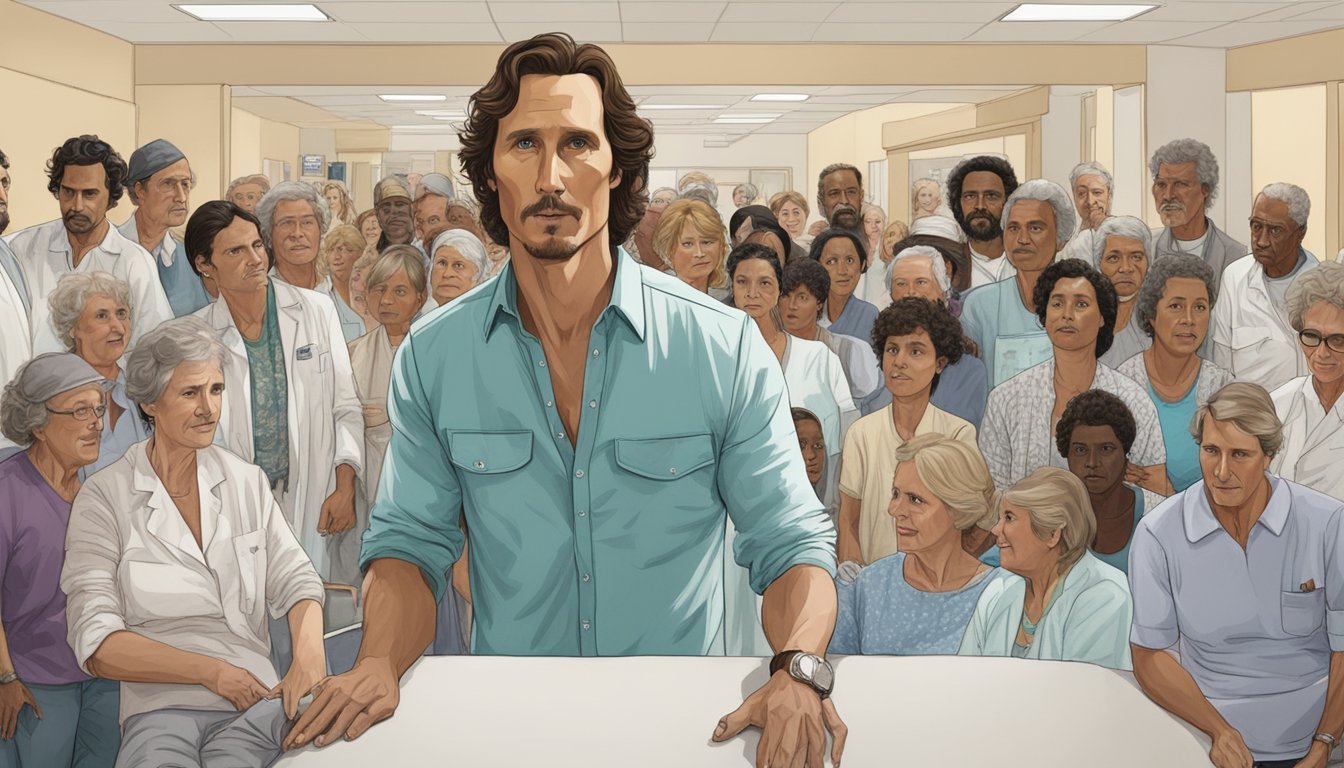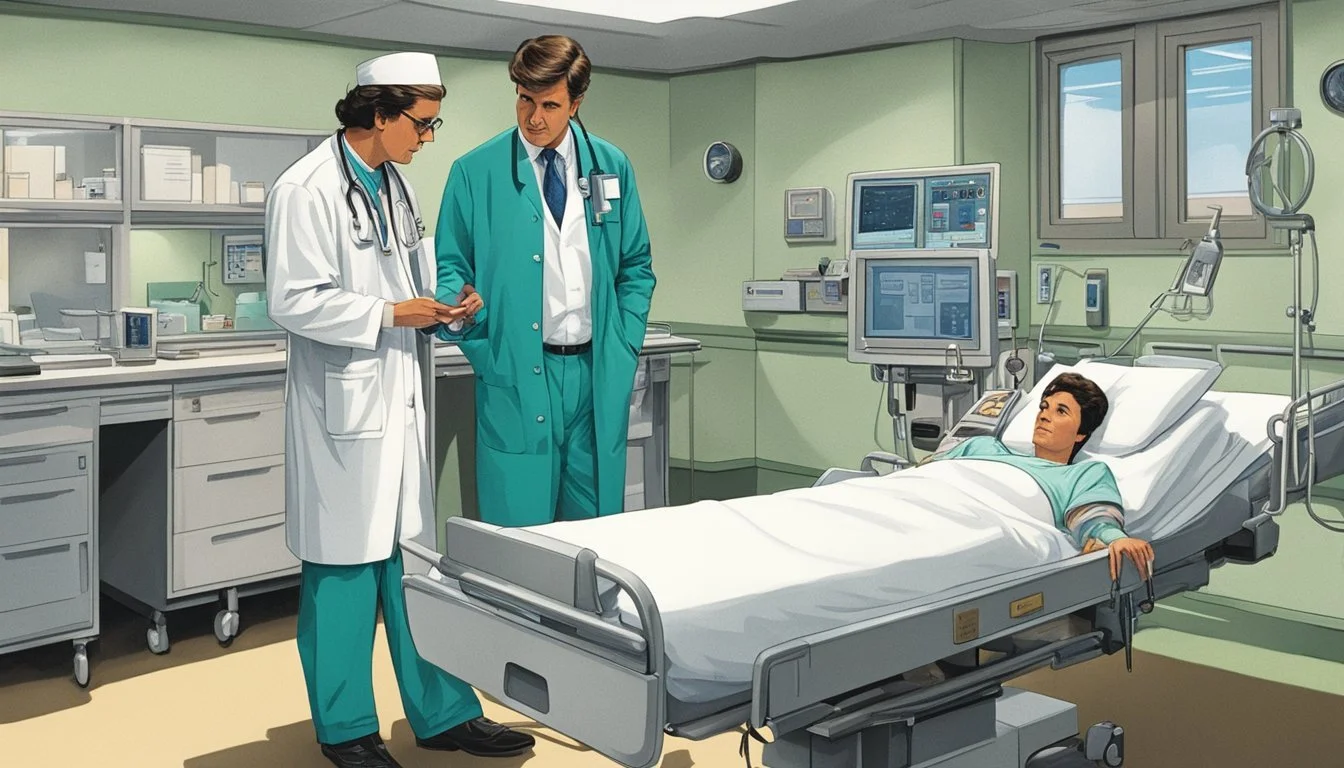McConaughey's 50-Pound Gamble: From Rom-Com Hunk to Oscar-Winning AIDS Crusader!
Matthew McConaughey's portrayal of Ron Woodroof in "Dallas Buyers Club" stands as a defining moment in his acting career. The 2013 biographical drama tells the story of a Texas electrician diagnosed with AIDS in the 1980s who smuggled unapproved drugs to help fellow patients. McConaughey's transformative performance earned him the Academy Award for Best Actor, showcasing his dedication to the craft through a dramatic physical transformation and nuanced portrayal of Woodroof's journey.
The film, based on true events, sheds light on the early years of the AIDS crisis and the struggles faced by those seeking treatment. McConaughey's weight loss of nearly 50 pounds for the role garnered significant attention, but it was his ability to capture Woodroof's complex character that truly resonated with audiences and critics alike. His portrayal brought depth and humanity to a story that highlighted the challenges of HIV/AIDS patients during a time of limited understanding and treatment options.
"Dallas Buyers Club" not only elevated McConaughey's status as a serious dramatic actor but also raised awareness about a crucial period in medical and social history. The film's exploration of the underground market for AIDS medications and the fight against bureaucracy struck a chord with viewers, making it both a critical and commercial success. McConaughey's commitment to the role and the film's powerful narrative continue to be recognized as significant contributions to cinema and public discourse on HIV/AIDS.
Genesis of the Film
Dallas Buyers Club emerged from a lengthy development process spanning two decades. The film's journey from concept to screen involved extensive research, script revisions, and the assembly of a talented cast and crew.
Development Process
Craig Borten first interviewed Ron Woodroof in 1992, recording hours of conversations. He wrote the initial screenplay shortly after, but the project languished in development for years. Melisa Wallack joined as co-writer in 2000, helping to refine the script.
Several studios showed interest, but financing proved challenging due to the film's sensitive subject matter. The project changed hands multiple times, with various actors and directors attached at different points.
After nearly 20 years of persistence, the film finally secured funding in 2011. Jean-Marc Vallée signed on as director, bringing a fresh perspective to the long-gestating project.
Script and Screenplay
Borten and Wallack's screenplay drew heavily from Woodroof's real-life experiences. They focused on his transformation from a homophobic rodeo cowboy to an unlikely AIDS activist.
The writers faced the challenge of condensing years of events into a compelling narrative. They chose to highlight key moments in Woodroof's journey, emphasizing his resourcefulness and determination.
The script underwent numerous revisions to balance historical accuracy with dramatic storytelling. It earned praise for its nuanced portrayal of complex characters and its exploration of 1980s AIDS crisis.
Securing the Cast
Matthew McConaughey's involvement proved crucial to the film's production. He lobbied for the role of Ron Woodroof, seeing it as an opportunity to showcase his dramatic range.
McConaughey's commitment included a dramatic physical transformation. He lost 47 pounds to portray the AIDS-stricken Woodroof, demonstrating his dedication to the role.
Jared Leto joined the cast as Rayon, a transgender woman with AIDS. Like McConaughey, Leto underwent a significant physical transformation for the part.
Jennifer Garner rounded out the main cast as Dr. Eve Saks, adding depth to the medical establishment's perspective. The assembled cast brought gravitas and authenticity to the challenging subject matter.
Historical Context
The 1980s marked a pivotal time in the fight against HIV/AIDS, characterized by widespread fear, stigma, and limited medical understanding. This period saw the emergence of grassroots efforts to combat the epidemic, including the formation of buyers clubs.
The HIV/AIDS Epidemic in the 1980s
HIV/AIDS emerged as a global health crisis in the early 1980s. The disease spread rapidly, particularly among gay men and intravenous drug users. By 1985, over 12,000 Americans had died from AIDS-related causes.
The medical community struggled to understand the virus and develop effective treatments. AZT became the first FDA-approved drug for HIV in 1987, but it was expensive and had severe side effects.
Public health campaigns attempted to raise awareness, but misinformation and fear persisted.
Stigma and Medical Understanding
HIV/AIDS patients faced intense stigma and discrimination. Many lost jobs, housing, and social support due to their diagnosis. Homophobia fueled misconceptions about the disease's transmission.
The medical establishment was initially slow to respond. Some healthcare workers refused to treat AIDS patients. Research funding was limited in the early years of the epidemic.
Gradually, scientific understanding improved. By the mid-1980s, researchers identified HIV as the cause of AIDS and developed blood tests for the virus.
Inception of Buyers Clubs
Buyers clubs emerged as a response to the slow pace of drug development and FDA approval. These underground organizations sourced and distributed experimental treatments not yet available in the U.S.
Ron Woodroof, portrayed by Matthew McConaughey in Dallas Buyers Club, founded one such organization in Dallas in 1988. He and others like him operated in a legal gray area, challenging the medical establishment.
Buyers clubs provided hope and alternative options for AIDS patients. They also played a role in advocating for faster drug approval processes.
Character Profiles
Dallas Buyers Club features complex characters who undergo significant transformations. The film's protagonists challenge societal norms and confront personal demons while navigating the AIDS crisis of the 1980s.
Ron Woodroof's Transformation
Matthew McConaughey portrays Ron Woodroof, a hard-living rodeo cowboy diagnosed with AIDS. Initially homophobic and self-destructive, Ron evolves into an unlikely activist. His journey from a reckless hustler to a determined advocate is central to the film's narrative.
Ron's physical transformation is striking. McConaughey lost significant weight to embody the AIDS-stricken Woodroof. This drastic change visually represents Ron's internal struggle and growing awareness of his mortality.
As Ron fights for his life, he develops empathy for others in similar situations. His entrepreneurial spirit leads him to establish the Dallas Buyers Club, distributing unapproved medications to fellow AIDS patients.
Rayon's Impact
Jared Leto delivers a powerful performance as Rayon, a transgender woman also battling AIDS. Rayon's character brings depth and emotional resonance to the story.
Initially, Ron views Rayon with disdain. Their relationship evolves into an unlikely partnership and friendship. Rayon's wit, vulnerability, and resilience challenge Ron's prejudices and broaden his perspective.
Leto's portrayal avoids stereotypes, presenting Rayon as a complex individual. Her struggles with identity, addiction, and illness add layers to the film's exploration of the AIDS crisis.
Supporting Characters
Jennifer Garner plays Dr. Eve Saks, a compassionate physician caught between her duty to follow medical protocols and her desire to help desperate patients. Dr. Saks represents the medical establishment's evolving response to the AIDS epidemic.
The film also features various supporting characters who highlight different aspects of the crisis. These include other AIDS patients, medical professionals, and government officials.
These characters provide context for Ron and Rayon's struggles. They illustrate the widespread impact of AIDS and the diverse reactions to the epidemic, from fear and discrimination to compassion and activism.
Production Details
Dallas Buyers Club faced numerous hurdles during its production journey. The film's creation involved overcoming financial obstacles, selecting appropriate shooting locations, and meticulously recreating the 1980s aesthetic.
Challenges in Financing
The road to financing Dallas Buyers Club was arduous. The project languished in development for nearly 20 years before finally securing funding. Initial investors were hesitant due to the film's sensitive subject matter. The breakthrough came when Matthew McConaughey committed to the lead role, attracting additional interest.
Despite this, the movie operated on a tight $5 million budget. This constraint necessitated creative solutions from the production team. Cast and crew worked for scale wages, demonstrating their belief in the project's importance.
The film's financial struggles ultimately contributed to its authenticity, mirroring the resourcefulness of its protagonist.
Filming Location
Dallas Buyers Club was primarily shot in New Orleans, Louisiana, rather than its titular city of Dallas, Texas. This decision was driven by Louisiana's attractive tax incentives for film production.
The crew transformed various New Orleans locations to convincingly portray 1980s Dallas. Key scenes were filmed in the French Quarter and other historic areas of the city. The production team skillfully utilized these locations to create a believable Texas backdrop.
Some exterior shots were captured in Dallas to maintain geographical accuracy. This blend of locations allowed the filmmakers to maximize their limited budget while preserving the story's authentic setting.
Creating the 1980s Look
Recreating the visual aesthetic of 1980s Texas was crucial for Dallas Buyers Club's authenticity. The production design team faced the challenge of accurately depicting the era on a limited budget.
Costume designer Kurt Swanson sourced period-appropriate clothing from thrift stores and vintage shops. This approach not only saved money but also added to the film's realistic look.
Hair and makeup played a vital role in transforming the actors. McConaughey's dramatic weight loss was enhanced through makeup techniques to portray the progression of his character's illness.
Set decorators carefully selected props and furnishings that evoked the 1980s without appearing clichéd. This attention to detail helped immerse viewers in the film's time period.
McConaughey's Transformation for the Role
Matthew McConaughey underwent a radical transformation to portray Ron Woodroof in Dallas Buyers Club. His dedication to the role involved extreme physical changes and in-depth character study.
Physical Preparation
McConaughey lost 50 pounds for the role, dropping to just 135 pounds. He achieved this dramatic weight loss through a carefully controlled diet of fish, vegetables, and tapioca pudding. The actor consumed only 500 calories per day for several months.
This extreme physical change had unexpected effects. McConaughey reported feeling "hyper" and mentally sharp during the process. His body never fully recovered from the drastic weight loss.
The physical transformation was crucial for accurately depicting Woodroof's struggle with AIDS. It lent authenticity to McConaughey's portrayal of a man battling a life-threatening illness.
Character Study
McConaughey immersed himself in Woodroof's world to prepare for the role. He read Bill Minutaglio's extensive Dallas Morning News article about Woodroof's life and smuggling operation.
The actor studied Woodroof's mannerisms, speech patterns, and personal history. He incorporated elements of Woodroof's brash personality and entrepreneurial spirit into his performance.
McConaughey employed method acting techniques, staying in character throughout filming. This approach helped him maintain the emotional intensity required for the role.
His thorough character study and physical transformation paid off. McConaughey's portrayal of Woodroof earned him the Academy Award for Best Actor in 2014.
Regulatory Battles
Ron Woodroof's efforts to obtain unapproved AIDS treatments led to confrontations with regulatory agencies and the medical establishment. His actions highlighted the tension between patient access and drug approval processes during the AIDS crisis.
FDA and Unapproved Drugs
The FDA strictly regulated AIDS treatments in the 1980s, limiting options for patients. Woodroof smuggled unapproved drugs into the U.S., defying FDA regulations. He distributed medications like peptide T and ddC through the Dallas Buyers Club.
This put him at odds with authorities. The FDA conducted raids on buyers clubs, seizing unapproved drugs. Woodroof faced legal challenges but continued his operations.
He argued that patients should have the right to try experimental treatments. This stance resonated with many AIDS activists frustrated by slow drug approval processes.
Alternative Treatments
Woodroof explored alternative AIDS treatments beyond AZT, the only FDA-approved drug at the time. He researched and sourced various medications from abroad.
These included antiviral drugs, immune system boosters, and nutritional supplements. Woodroof provided these to club members as alternatives to traditional medical care.
He believed some of these treatments were more effective and had fewer side effects than AZT. This approach challenged the medical establishment's reliance on approved protocols.
Woodroof's efforts sparked debates about the efficacy of alternative therapies. It also raised questions about patient autonomy in choosing treatments.
Cultural Impact and Legacy
"Dallas Buyers Club" left an indelible mark on cinema and popular culture. The film sparked important conversations about HIV/AIDS treatment and garnered widespread critical acclaim.
Critical Reception
"Dallas Buyers Club" received overwhelmingly positive reviews from critics. The film holds a 93% approval rating on Rotten Tomatoes, based on 266 reviews. Critics praised the powerful performances, particularly those of Matthew McConaughey and Jared Leto.
Many reviewers highlighted the film's unflinching portrayal of the AIDS crisis and its exploration of healthcare inequalities. The movie's emotional depth and compelling storytelling resonated with audiences worldwide.
Awards and Nominations
The film's impact extended to major award ceremonies. "Dallas Buyers Club" earned six Academy Award nominations, including Best Picture. Matthew McConaughey won the Oscar for Best Actor, while Jared Leto secured the Best Supporting Actor award.
At the Golden Globe Awards, the movie received two wins out of six nominations. McConaughey and Leto both took home awards for their performances. The film's success at these prestigious events solidified its place in cinematic history.
These accolades brought increased attention to the issues portrayed in the movie, furthering discussions about HIV/AIDS treatment and patient rights.
Assessment of Historical Accuracy
Dallas Buyers Club portrays Ron Woodroof's struggle with AIDS and his efforts to provide alternative treatments. The film's depiction of Woodroof aligns with historical accounts in several key aspects.
Woodroof's HIV diagnosis and subsequent establishment of the Dallas Buyers Club are based on real events. The movie accurately captures the limited treatment options available in the mid-1980s and the FDA's strict regulations.
However, some elements were dramatized for cinematic effect. The timeline of events was compressed, and certain characters were fictionalized or composites of multiple individuals.
The film's portrayal of AZT as universally harmful is somewhat exaggerated. While AZT had serious side effects, it did help some patients when properly administered.
Woodroof's transformation from a homophobic cowboy to an ally of the LGBTQ+ community is largely accurate, though potentially accelerated in the film's narrative.
The movie's depiction of AIDS patients' struggles with discrimination and inadequate medical care reflects the reality of the time period. It effectively illustrates the fear and misinformation surrounding HIV/AIDS in the 1980s.







